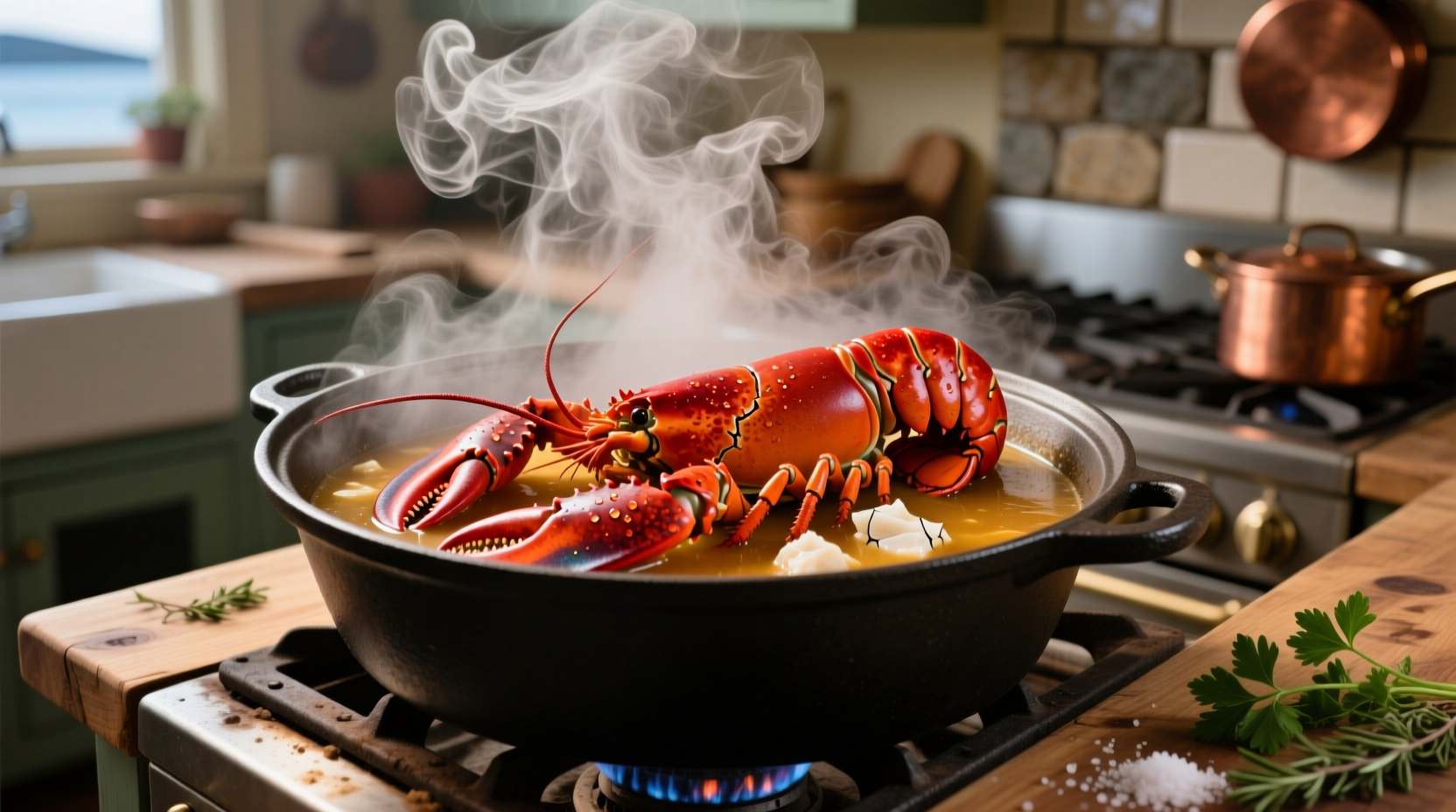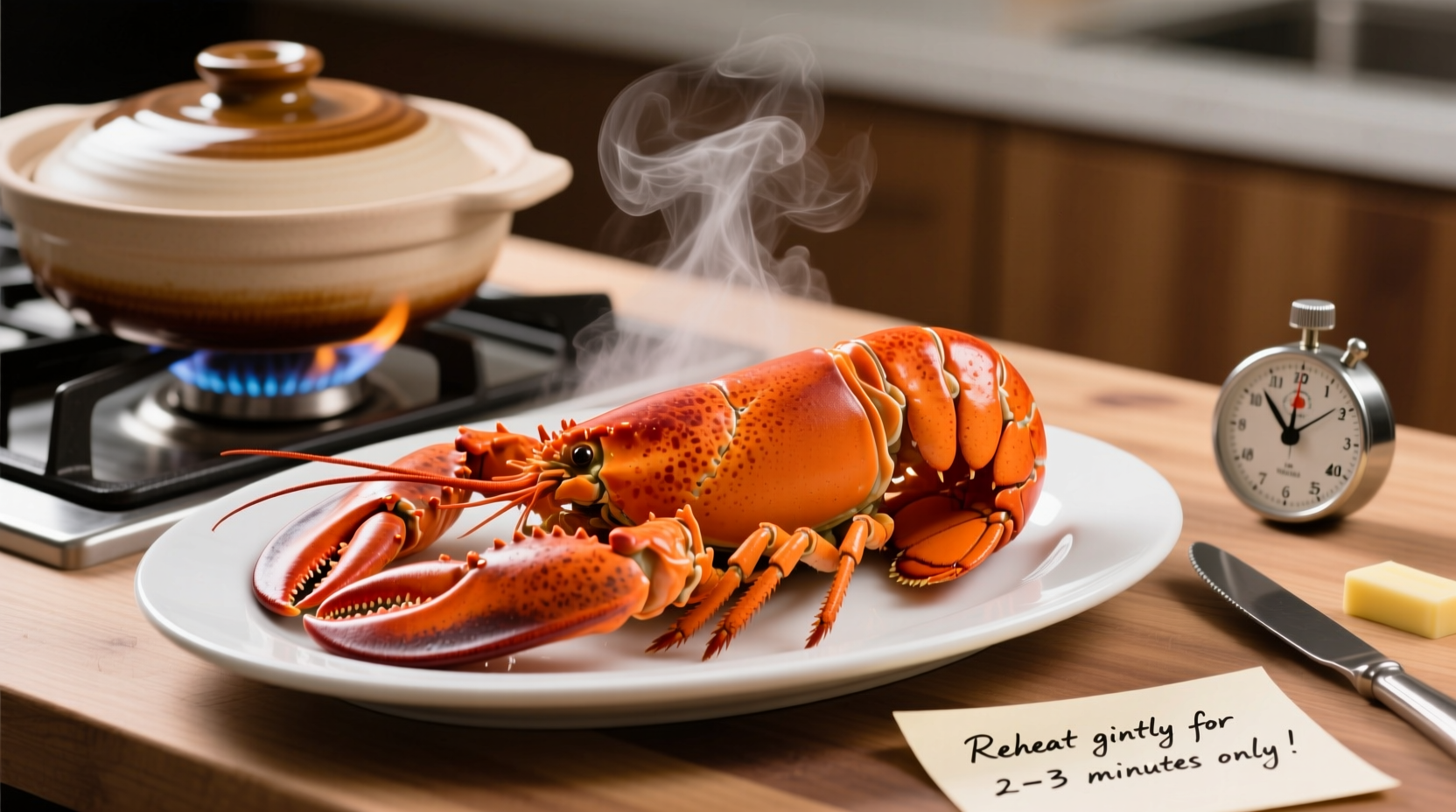The best way to reheat cooked lobster is by steaming: place lobster in a steamer basket over simmering water for 3-5 minutes until internal temperature reaches 140°F (60°C). This gentle method preserves moisture and prevents the delicate meat from becoming rubbery. Never microwave whole lobster as it dries out the meat rapidly.
Leftover lobster is a precious treat worth reheating properly. Many home cooks make the mistake of tossing their prized crustacean into the microwave or oven without preparation, only to end up with tough, dry meat that ruins the experience. As someone who's worked in professional kitchens for over 15 years, I've seen countless diners disappointed by improperly reheated seafood. The good news? With the right technique, you can enjoy reheated lobster that tastes nearly as fresh as when first cooked.
Why Proper Lobster Reheating Matters
Lobster meat contains delicate proteins that easily become tough when exposed to high heat or prolonged cooking. Unlike heartier proteins, lobster requires gentle reheating to maintain its signature tender texture. According to the U.S. Food and Drug Administration, seafood proteins begin to denature at temperatures above 140°F (60°C), which explains why overheating creates that unpleasant rubbery texture.
| Reheating Method | Time Required | Texture Result | Safety Rating |
|---|---|---|---|
| Steaming | 3-5 minutes | Moist, tender | ★★★★★ |
| Oven (with butter) | 10-12 minutes | Slightly firm | ★★★★☆ |
| Boiling | 2-3 minutes | Waterlogged | ★★☆☆☆ |
| Direct Microwave | 1-2 minutes | Rubbery, dry | ★☆☆☆☆ |
Step-by-Step: Steaming Method (Recommended)
Steaming provides the most consistent results for reheating cooked lobster while preserving its delicate texture. Here's how professional kitchens do it:
- Remove lobster from refrigerator and let sit at room temperature for 15 minutes
- Fill a pot with 1-2 inches of water and bring to a gentle simmer (not boiling)
- Place lobster in a steamer basket, meat-side up
- Cover pot tightly with lid
- Steam for 3-5 minutes until internal temperature reaches 140°F (60°C)
- Remove immediately and serve with melted butter
This method works for both whole cooked lobsters and lobster tails. The gentle steam heats the meat without direct water contact, preventing waterlogging while ensuring even warming.

Oven Method for Larger Quantities
When reheating multiple lobster portions or preparing for a gathering, the oven provides consistent results:
- Preheat oven to 350°F (175°C)
- Place lobster on a baking sheet
- Brush generously with melted butter or olive oil
- Cover loosely with foil
- Heat for 10-12 minutes until internal temperature reaches 140°F (60°C)
- For extra flavor, add a splash of seafood stock or white wine to the baking sheet
The U.S. Department of Agriculture's Food Safety and Inspection Service recommends seafood should reach 145°F for initial cooking, but for reheating leftovers, 140°F is sufficient to ensure safety while preserving texture.
Microwave Method (With Important Caveats)
While not ideal, the microwave can work in emergencies if you follow these precise steps:
- Remove lobster meat from shell completely
- Place meat in microwave-safe dish
- Add 1 tablespoon of butter or broth
- Cover tightly with microwave-safe lid or plastic wrap
- Heat at 50% power for 30-second intervals
- Check temperature after each interval
- Stop when internal temperature reaches 140°F (60°C)
Never microwave whole lobster in the shell as uneven heating creates hot spots that cook some areas while leaving others cold. The Maine Department of Marine Resources notes that lobster meat continues to cook from residual heat for several minutes after removal from heat source, so always remove it slightly before reaching target temperature.
Storage Timeline for Maximum Freshness
Proper storage before reheating is just as important as the reheating method itself:
- Refrigerate within 2 hours of cooking
- Store in airtight container with damp paper towels
- Consume within 2 days for best quality
- Never freeze already-cooked lobster (freezing raw is preferable)
According to Cornell University's Seafood Science program, cooked lobster begins losing moisture and texture quality after 48 hours in refrigeration. The proteins continue to break down, making proper reheating more challenging with each passing day.
Critical Safety Considerations
Food safety should never be compromised when reheating seafood:
- Always use a food thermometer to verify internal temperature
- Discard lobster left at room temperature for more than 2 hours
- Never reheat lobster more than once
- Watch for signs of spoilage: sour smell, slimy texture, or discoloration
The National Oceanic and Atmospheric Administration (NOAA) reports that proper seafood handling prevents approximately 90% of seafood-related foodborne illnesses. When in doubt about freshness, it's always safer to discard questionable product.
Common Reheating Mistakes to Avoid
Even experienced cooks make these critical errors when reheating lobster:
- Using boiling water instead of gentle steam
- Overheating beyond 140°F (60°C)
- Reheating lobster still in the shell without protection
- Adding salt during reheating (already seasoned from initial cook)
- Skipping the temperature check
Remember that lobster continues to cook from residual heat after removal from the heat source. Professional chefs typically remove lobster when it reaches 135°F (57°C), allowing it to coast to the safe 140°F (60°C) mark without overcooking.











 浙公网安备
33010002000092号
浙公网安备
33010002000092号 浙B2-20120091-4
浙B2-20120091-4